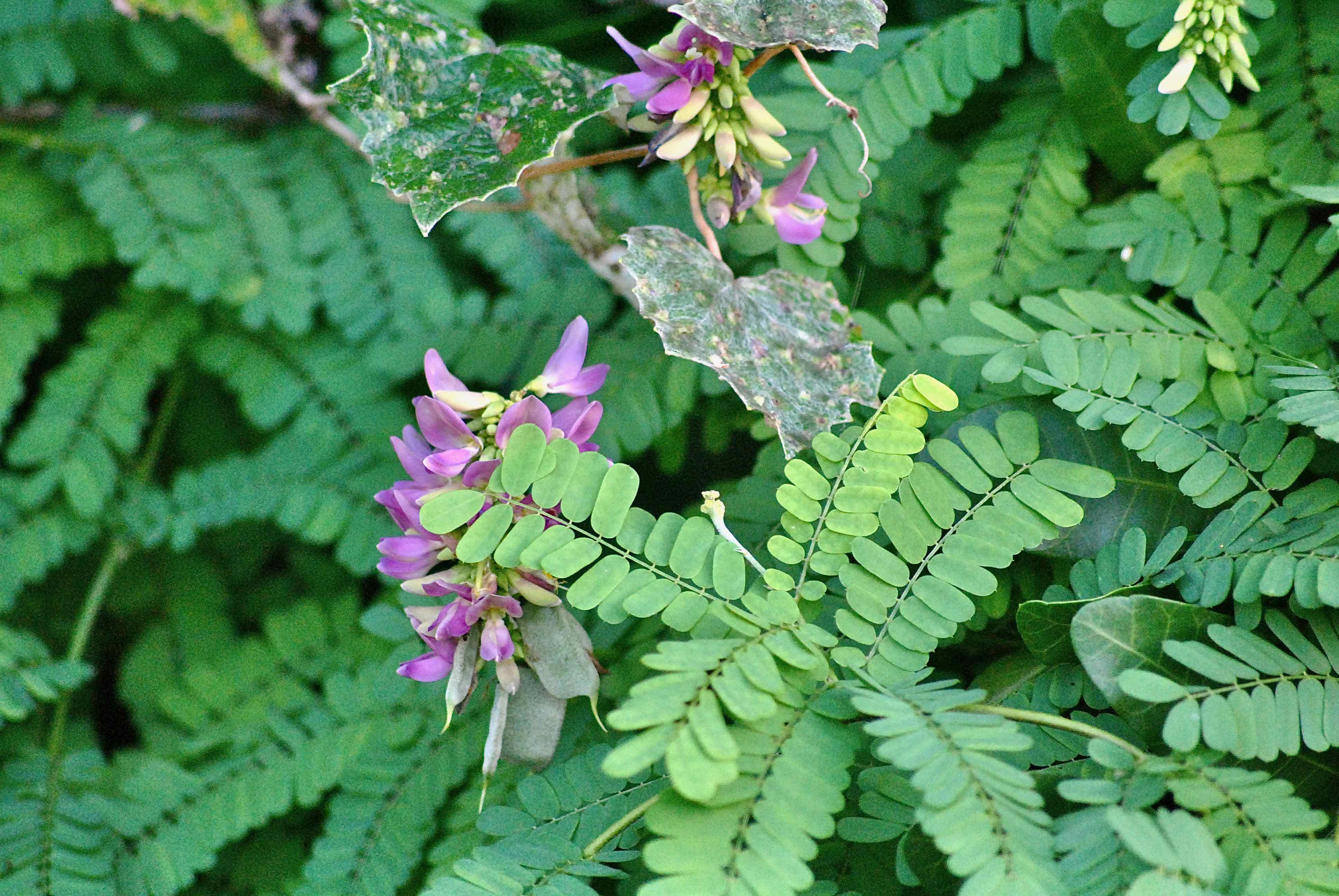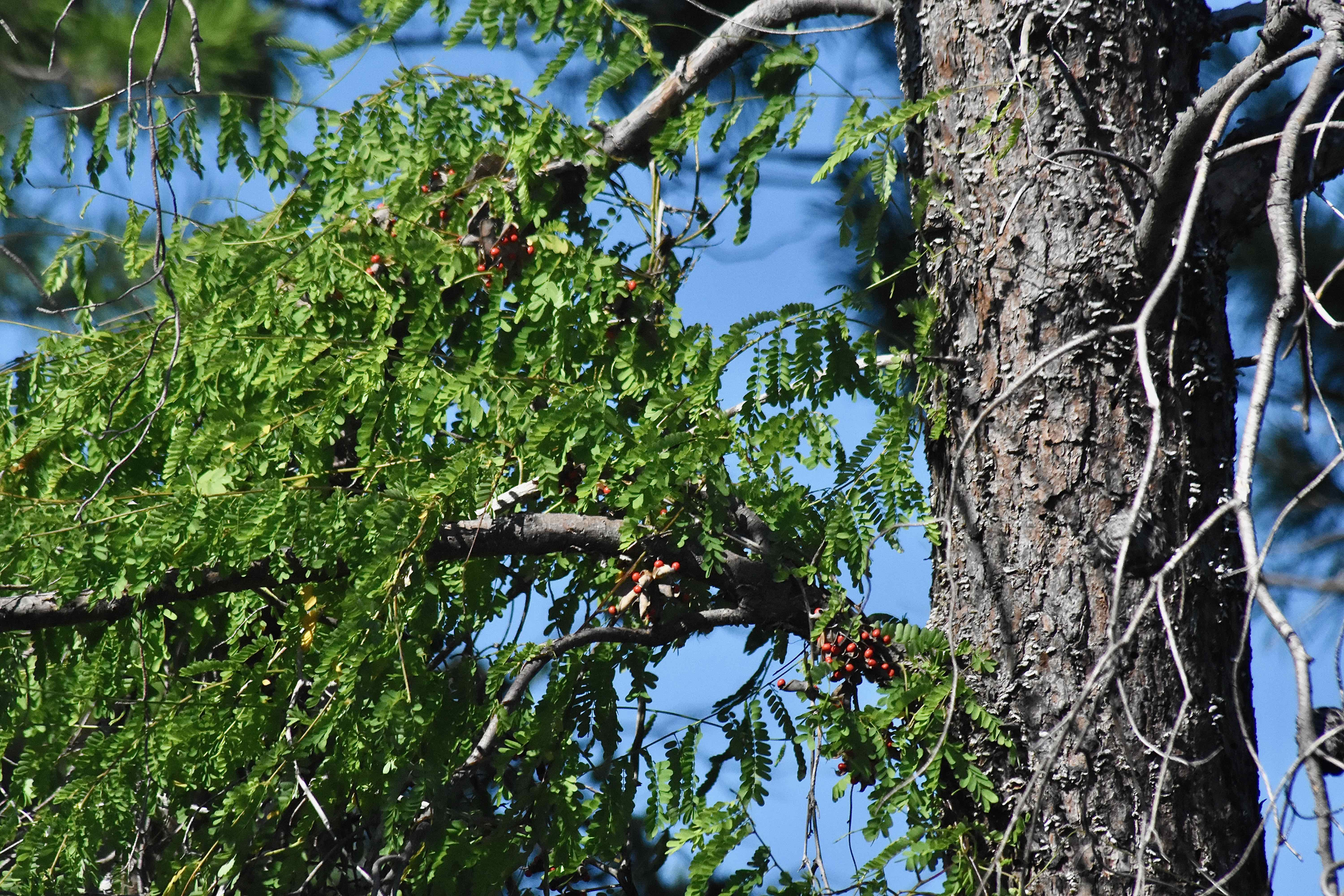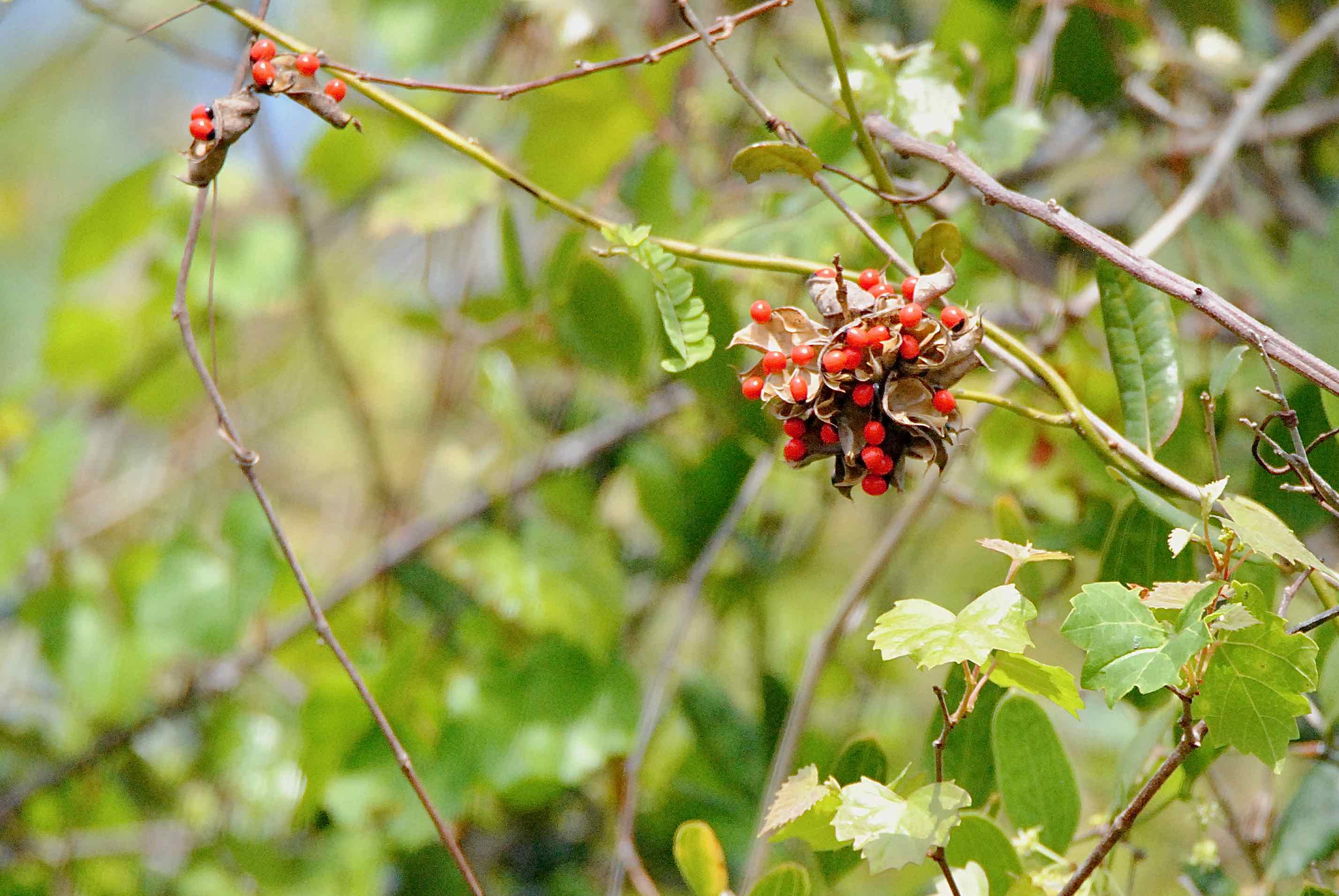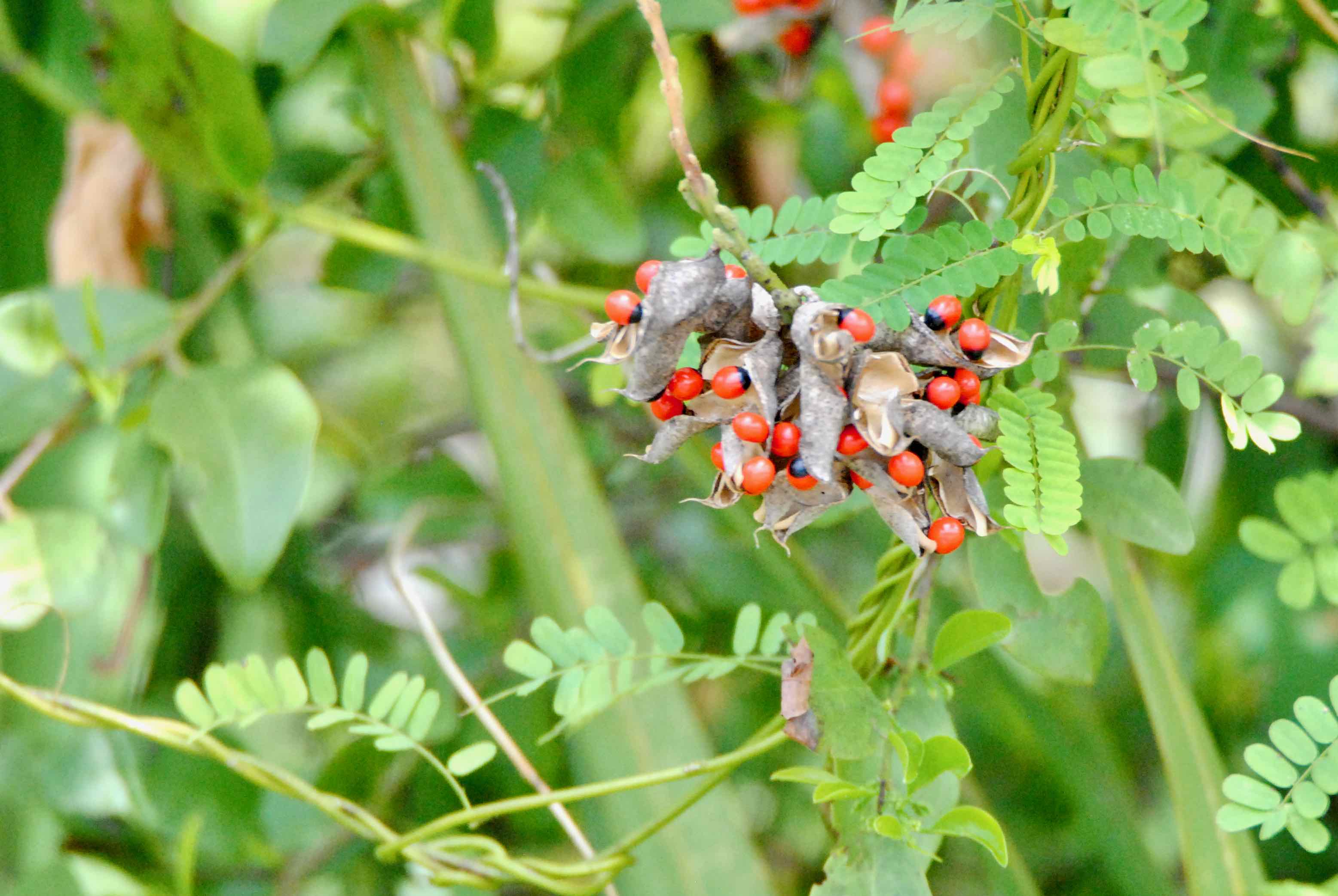
Rosary pea, photographed at Yamato Scrub Natural Area, Boca Raton, Palm Beach County, in March 2016.
Rosary pea, Abrus precatorius, ranks among Florida's worst invaders, arguably among the world's worst. It's also, indisputably, among the deadliest.
Rosary pea is an unassumingly slender vine, with delicate-looking leaves and lovely pink to lavender flowers. However, it grows like crazy, and can smother small trees and shrubs and even challenge larger trees. And it reproduces explosively.
Thing is, the whole plant, but the seeds especially, contain a toxin called abrin, and it doesn't take much of the stuff to kill a human being. It's estimated that as little as 0.000015 percent of abrin in ratio to body weight is enough to cause death, whether it's ingested, inhaled or injected. That's one seed's worth. Cornell University's College of Agriculture and Life Science ranks rosary pea with castor bean, the source of ricin, as the deadliest plant toxins.
Rosary pea is a non-native vine introduced to Florida as an ornamental sometime before the early 1930s and rapidly established itself in wild parts of the state. One naturalist observed rosary pea quickly “taking full possession” of a young forest, and that it was impossible to remove the stuff even after several years’ effort.
It is a thread-like vine that twines itself over neighboring trees and shrubs. It is compound leaves, each with 20 or so pairs of oblong leaflets. The leaves align themselves alternately along the stem. The vines can climb more than 30 feet into the air. Rosary pea produces clusters of pale pink or lavender flowers at the ends of long stalks. The flowers in turn produce seed pods that open up to reveal the seeds, shiny, scarlet with a black spot at the base. The seeds are so uniform in weight that in some places, they're used as a standard with which to measure the weight of other things. It is undeniably an attractive-looking plant.
Rosary pea is a native of tropical parts of India and southeast Asia, although oddly enough even India apparently considers it an invasive. In Florida, it's found in 27 counties from roughly Volusia southward to the Keys. It's found in three other states — Georgia, South Carolina and Arkansas.
Thing is, there are few good options to eliminate rosary pea. Small patches can be pulled, but rosary pea has extremely deep roots that make the job extremely difficult. Burning it slows it down to a point, but those same deep roots allow the plant to survive fires and even thrive in the aftermath. There are no know biological controls; there are herbicides, but the timing when applied needs to right and there's the possibility of damaging desirable plants.
As we noted, the seeds are commonly used in places as a standard for weights and measures. They're also used to make jewelry, and children often play with them, which is kind of a terrifying thought. The seed coating has to be broken before the toxin is released, but it isn't difficult to imagine a kid doing so in his/her mouth.
Despite the extreme toxicity of rosary pea, it is used medicinally in India to induce abortions, as a contraceptive, to ward off evil spirits, cure abdominal problems, graying hair, treat coughs, worms and wounds.
Other common names for rosary pea: crab eyes, crab's eyes, Indian licorice, love bean, lucky bean, jequerty, bead vine, prayer bead, pois rouse, precatory bean, coral bead, tento muido and cock's eye. It is a member of Fabaceae, the pea family.
Click on photo for larger image
U.S. Department of Agriculture Distribution Maps
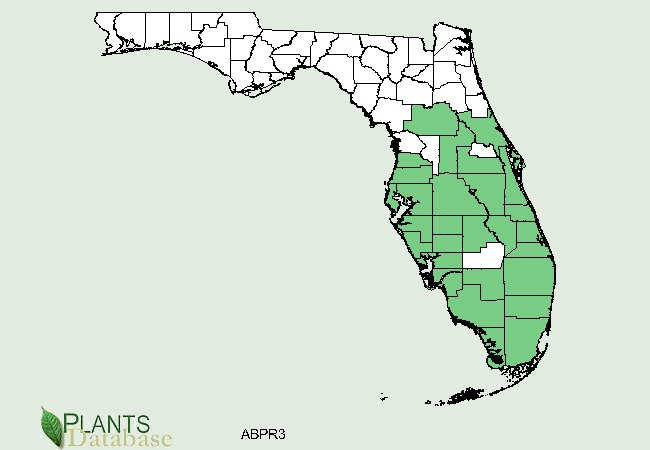

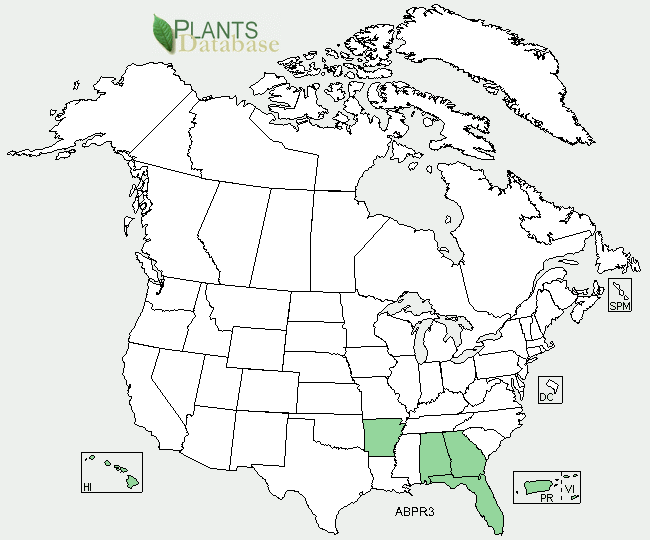
Links for Rosary Pea

